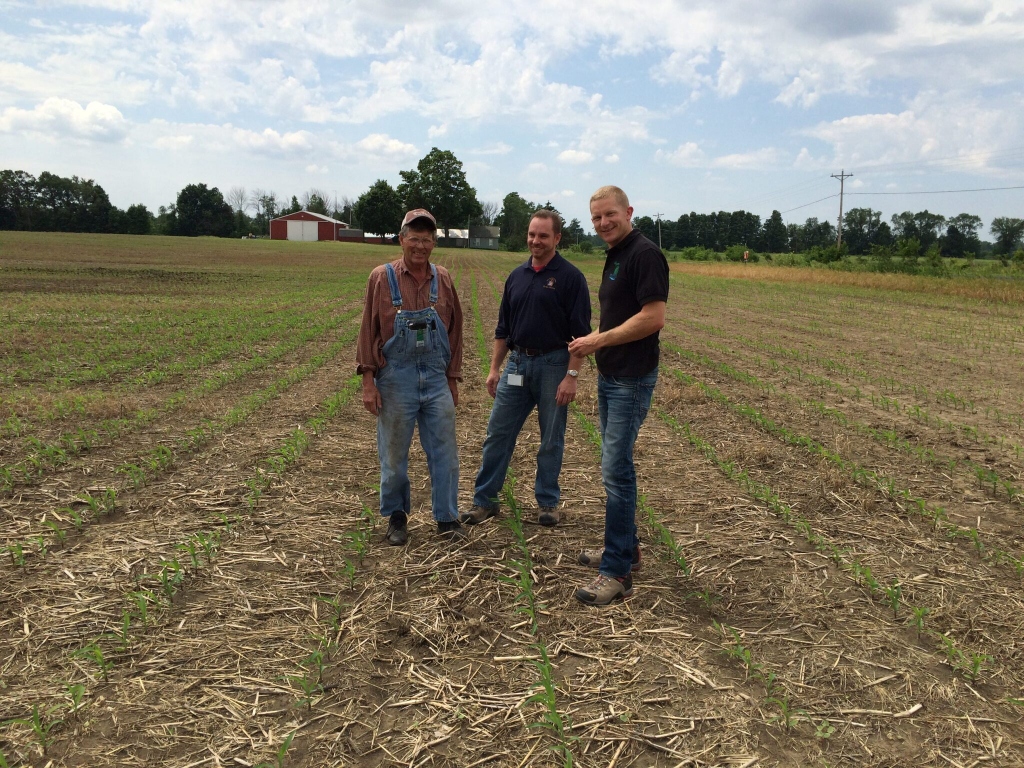The projects implemented in Michigan and Indiana both successfully redistributed costs more fairly, and generated or reinforced improved land management practices. In Van Buren County’s 2014 pilot, 43 Best Management Practices were certified by the Conservation District and used to calculate drain apportionments. There was a 21% average sedimentation reduction for parcels with certified BMPs, resulting in 192.4 tons of sediment loading prevented and 37 million gallons of total groundwater recharge. Some of the practices included 600 acres of no-till agriculture, 495 acres of cover crops, and 12.7 acres of filter strips, which are sloped densely vegetated areas that act as a buffer between agricultural fields and drainage systems. In 2018, the program was expanded into two additional watersheds in Van Buren County. Both watersheds experienced large reductions in sediment load from parcels with certified agricultural best management practices (433.6 tons of sediment/year from 32 parcels in the Health and Cemetery Watershed and 183.6 tons of sediment/year from 15 parcels in the Vanderlyn Watershed).
Currently LaGrange County is using a similar apportionment approach in five drainage watersheds. The next step in LaGrange County will be incorporating land management practices into the apportionment for these five watersheds and any new ones where the approach is used.
Many communities are unlikely to consider changing their apportionment process until the administrative burden of an alternative approach is reduced or taxpayers begin to question the fairness of the existing system. However, as flood risks increase and intensify, so will costs and damages associated with drainage, making the administrative investment worth it. Overall, landowners tended to like the alternative apportionment approach because it is perceived to be fairer. While there is a higher administrative cost to the alternative approach, the charges are distributed more equitably. Additionally, the alternative approach provides pathways for landowners to reduce their fees without reducing the total funding available for ditch maintenance, which is becoming a more burdensome with the increasing occurrence of heavy rains. Matt Meersman, Director of the St. Joseph River Basin Commission and advocate of the alternative approach, encourages communities to consider it as a way to provide an incentive to property owners for increasing resiliency before natural disasters strike.
Challenges
The biggest challenge with the alternative apportionment approach may be that it requires the drainage authority to revisit, and potentially recalculate, the apportionment on a regular basis (e.g. every 3-5 years). Existing drainage laws in Indiana and Michigan both require the drainage authority to hold public hearings and send notices to all affected landowners. The St. Joseph River Basin Commission is working with drainage authorities, conservation partners and local legislators to consider amendments to the drainage code to make the alternative approach easier to implement. Potential amendments could include changing the notification requirements (i.e. allowing notification by means other than a personalized mailing) or only requiring notification to landowners when the apportionment criteria change rather than every time individual percentages change.
Meersman highlighted that although data availability and technical capacity can be a challenge, the biggest obstacle to drainage officials adopting this approach is recognizing that drainage benefits are not static over time and accepting the additional administrative burden that entails.



